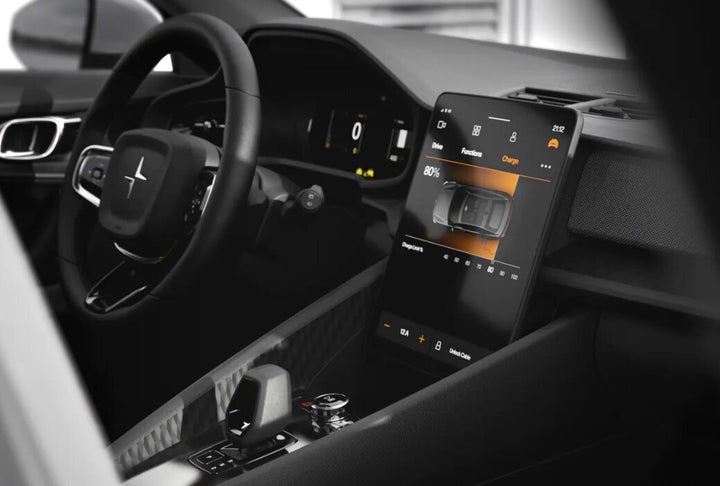Deloitte estimates that the number of EVs sold worldwide per year will increase more than tenfold between 2018 and 2030. Already, nearly half the cars sold in Norway are EVs. That’s because many of the misconceptions fostered, in part, by early models with limited range and other drawbacks are rapidly being demolished by next-generation EVs.
EVs not only compete on equal footing with their internal combustion engine (ICE) counterparts but actually surpass them feature-by-feature.
1. Goodbye To Combustion
With no pistons, spark plugs, transmission, or any of the other components required to translate the force of exploding fuel to turning wheels, EVs have many fewer moving parts than ICE cars. That means they require a lot less maintenance.
Just for starters, EVs don’t need oil changes. And today’s batteries last as long as the cars themselves, providing trouble-free service for 100,000 miles and more.
2. Goodbye To Discomfort
No explosions under the hood make for more comfortable rides. Gone is the rumble of an engine, the shake and shimmy of vibrating parts spinning and whirling in a dance that must be perfectly coordinated for the car to move forward.
Instead, EV drivers and riders are treated to smooth, vibration-free forward motion at any speed, with only the faintest of whines from electric motors. In fact, manufacturers are now adding noise to their vehicles, to warn pedestrians, and maybe even reassure drivers that their cars are actually running.
3. Goodbye To Poor Acceleration
A quieter ride doesn’t mean an anemic one. Quite the opposite. Because electric power requires no transmission, electrons give motors full power instantly. Even otherwise unremarkable EVs can get faster acceleration off the line than some muscle cars powered by gasoline. That also translates into more power for passing and other quick maneuvers while already rolling.
4. Goodbye To No Connectivity
In some ways, EVs act more like the smartphones their drivers carry in their pockets than the ICE cars they may have previously had in their garages. Today’s EVs are electronic wonders, running all the latest apps in the dashboard.
The Polestar-2, for example, comes with a full suite of modern apps, including Google Play, Google Maps, and Google Assistant. And, as on a smartphone, the apps get updated regularly over an always-on internet connection.
5. Goodbye To Unsustainable
Most people understand that with no emissions coming out of the tailpipe, EVs are easier on the local environment. But some still hold on to the mistaken belief that EVs charging on a fossil-fuel-powered grid don’t deliver a net environmental gain.
However, research—for example, analysis from the European Commission—proves otherwise. The studies show EVs with a clear environmental advantage, wherever they’re charged, even taking into account emissions created during manufacture.
One reason: EVs are more efficient overall than their ICE counterparts, which brings us to the next point.

6. Goodbye To Non-Efficient
Electricity is a more efficient means of producing forward momentum. That’s because ICE-powered cars lose lots of energy to friction in the engine all the extra moving parts needed to get moving.
The batteries on board EVs also let them recover energy lost to braking. Regenerative braking slows the car by turning the motors into generators that feed energy back into the battery, giving the car more range.
7. Goodbye To Assumptions
Speaking of range, today’s EVs carry more than enough juice to get drivers where they need to go. The average driver in the United Kingdom, for example, travels only 18 miles a day. At that rate, an EV with a range of 200 miles can easily get a commuter through a week without having to recharge.
But thinking of range this way reflects ICE-centric driving. Most ICE car drivers think of gassing up as a necessary evil that they subject themselves as infrequently as possible. EV drivers have quite a different relationship to recharging.
8. Goodbye To Petrol
EV drivers can charge their cars at home, at work, and many other destinations. That gives their cars a much greater effective range than their charge indicators may imply at first glance. There’s no need to visit a filling station most of the time because even ordinary electrical outlets can fit the bill.
On long trips, EV drivers get much of the benefit of filling stations thanks to fast-charger stations that can get a car from a 10 percent charge to 80 percent in just half an hour.
9. Goodbye To Lack Of Choice
Like smartphones, EVs keep adding features with regular software updates. Their greater efficiency and large battery packs can also deliver more features that don’t require running an engine. Quick pre-heating via smartphone app, air-conditioned interiors for pets while parked, and even heated camping are all possible in EVs.
10. Goodbye To Boring Brands
With all the advanced features of EVs, car companies are inspired to innovate for the customer experience as well. How about showrooms that focus on the user experience instead of hard-sells by salespeople on commission? Or subscription driving that does away with sales altogether while adding many other benefits?
Say hello to the car saying goodbye to normal; the Polestar. Discover how sustainability, style and seamlessness is being combined in a brand new electric vehicle.
Credit: Source link